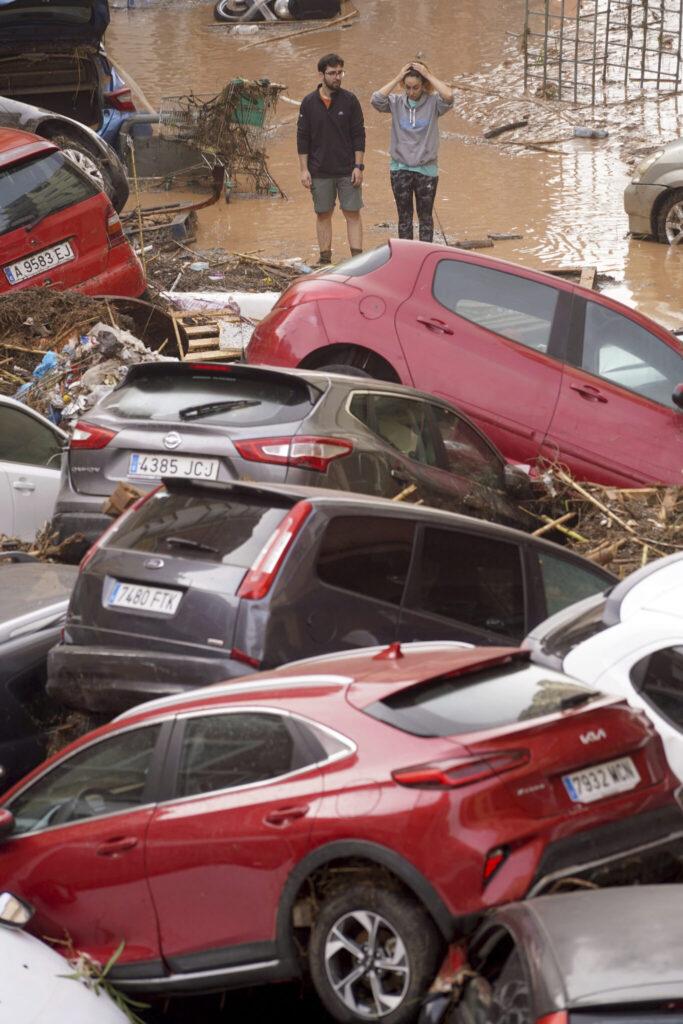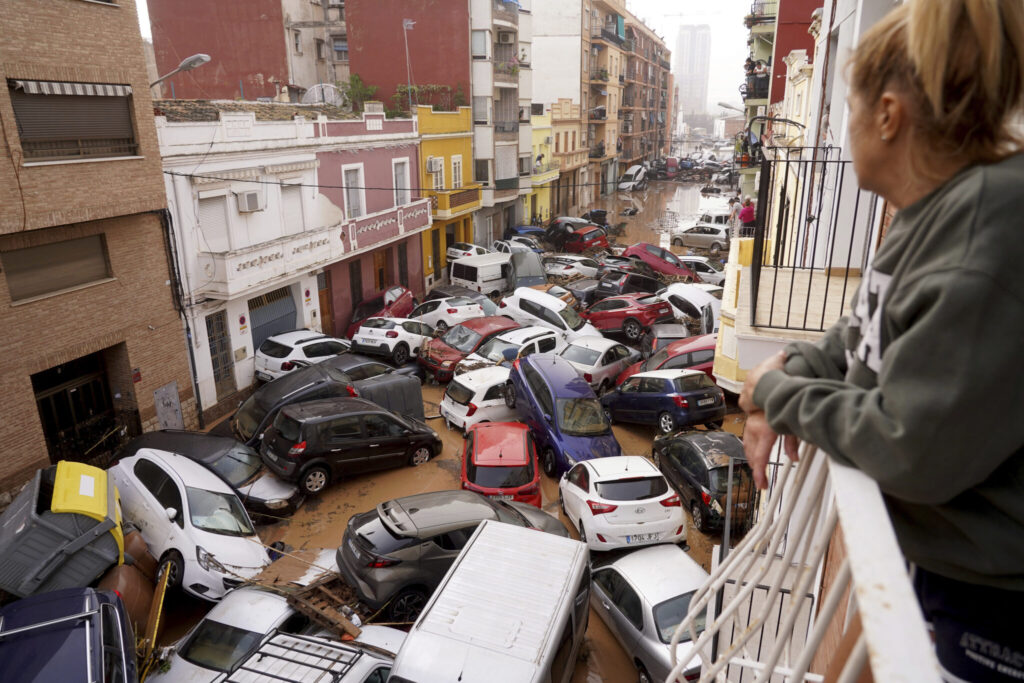Spain floods/ Valencia flash floods/ Spain natural disaster/ Spain rescue operations/ climate-linked floods/ Newslooks/ BARCELONA/ Spain/ J. Mansour/ Morning Edition/ Flash floods in eastern Spain have killed at least 63 people, transforming streets into rivers and causing widespread destruction across Valencia and surrounding areas. Emergency responders, including over 1,000 soldiers, are actively rescuing survivors as authorities warn of further storms. Prime Minister Pedro Sánchez promised full government support for recovery.

Flash Floods Ravage Eastern Spain: Quick Looks
- Death toll rises: At least 63 people confirmed dead as floods devastate Valencia and nearby regions.
- Heavy rains and damage: Torrential rains swept cars away and flooded entire neighborhoods.
- Rescue efforts: Over 1,000 soldiers deployed; helicopters and boats used to aid stranded residents.
- Climate factor: Spain’s frequent extreme weather events linked to climate change concerns.
- Transport disruptions: Trains and roads heavily impacted; warnings issued for continued storms.
Flash Floods Devastate Eastern Spain, Death Toll Climbs to 63
Deep Look
A sudden and powerful wave of flash floods in eastern Spain has left at least 63 people dead, with residents and authorities struggling to manage the catastrophic aftermath. Triggered by intense rainstorms, the flooding has wreaked havoc from Malaga to Valencia, sweeping vehicles down streets and submerging homes and infrastructure in the worst natural disaster the nation has faced in recent memory. Spanish Prime Minister Pedro Sánchez offered condolences to those grieving and assured the country of full governmental support in the rescue and recovery process.
Unprecedented Damage and Urgent Rescue Efforts
The deadly rainstorms, which began on Tuesday, unleashed flash floods across a vast region of southern and eastern Spain. In Valencia alone, torrents of mud-filled water barreled through neighborhoods, carrying vehicles, wood, and household debris in their paths. Spanish emergency services in Valencia reported an initial death toll of 62, while Castilla La Mancha officials later confirmed the death of an 88-year-old woman in Cuenca, bringing the count to 63 as of Wednesday morning.
As waters surged, emergency responders raced to evacuate those in immediate danger. Police and military units utilized helicopters to lift residents from submerged homes and used rubber boats to access individuals stranded on rooftops. Additional teams arrived from other regions of Spain to support the massive rescue efforts, with over 1,000 soldiers deployed to assist communities isolated by the floodwaters. Prime Minister Sánchez expressed the government’s commitment to “put all resources necessary” toward supporting affected towns and families searching for missing loved ones.
Accounts from the Flood Zone
The speed and intensity of the floods took many by surprise, leaving communities grappling with overwhelming loss and destruction. In Utiel, a town within the Valencia region, Mayor Ricardo Gabaldón described Tuesday as “the worst day of my life.” Streets flooded to nearly three meters deep, turning the town’s center into a deadly torrent. “We were trapped like rats,” Gabaldón told RTVE, recounting the debris-strewn streets where vehicles and trash bins were carried away by the current.
Throughout the impacted areas, the Spanish government’s crisis committee coordinated military-led rescues and used bulldozers to assist trapped individuals. In one instance, a military unit rescued an elderly couple from their second-story home using the shovel of a bulldozer as a makeshift vehicle. National television showed footage of streams overtaking bridges, streets layered with thick mud, and alarmed residents documenting flooded ground floors and damaged infrastructure.
Weather Extremes Linked to Climate Concerns
Spain has faced an increase in extreme weather events, with recent years setting record high temperatures and prolonged droughts. This flood catastrophe, some officials and scientists argue, is further evidence of a pattern likely tied to climate change. The storms even brought an unusual hailstorm that shattered car windows and greenhouses, along with a rare tornado sighting. The devastation echoes the deadly 2021 floods in Germany and Belgium, which killed over 200 people.
As waters subsided in some areas by late Wednesday, authorities warned of more rain forecast through Thursday, urging residents to exercise caution. The central government in Spain has issued advisories and set up temporary shelters as part of the ongoing response to this historic flood event.
Impact on Transportation and Daily Life
The floods disrupted key transportation services, halting high-speed trains on multiple lines and leaving roadways blocked by fallen trees and mud-covered wreckage. Near Malaga, a high-speed train carrying nearly 300 passengers derailed, though officials reported no injuries. Meanwhile, all high-speed rail connections between Valencia and Madrid were suspended as the torrential rains continued to create travel hazards.
Regional President Carlos Mazón advised Valencia residents to stay indoors, with flooded streets still posing significant risk. In the village of Barrio de la Torre, residents assessed the damage on Wednesday, describing streets covered in as much as 30 centimeters of mud and vehicles piled on top of each other. Bar owner Christian Viena shared that his business, like others in the area, would need to discard extensive water-damaged inventory and furniture.
Geography and Vulnerability of Flood-Prone Areas
Much of eastern Spain, particularly around Valencia, features riverbeds and ravines that remain dry most of the year but can turn deadly with intense rainfall. These natural channels run through populated areas, meaning that heavy rains, as seen this week, can transform them rapidly into destructive floods. As the Mediterranean tourist hub recovers, many worry about the future of these towns with a climate growing increasingly volatile.
The crisis in Valencia and surrounding regions has put Spain on high alert, with government and local authorities mobilizing resources and implementing emergency measures to address ongoing needs. With more rain expected, Spain braces for further challenges as residents mourn, rebuild, and navigate the uncertainty of further storms.







